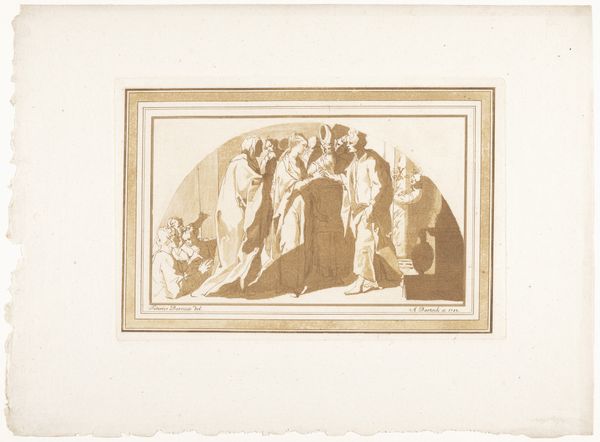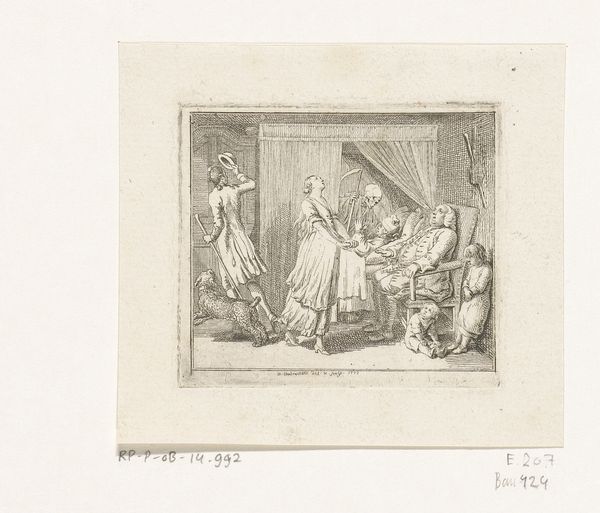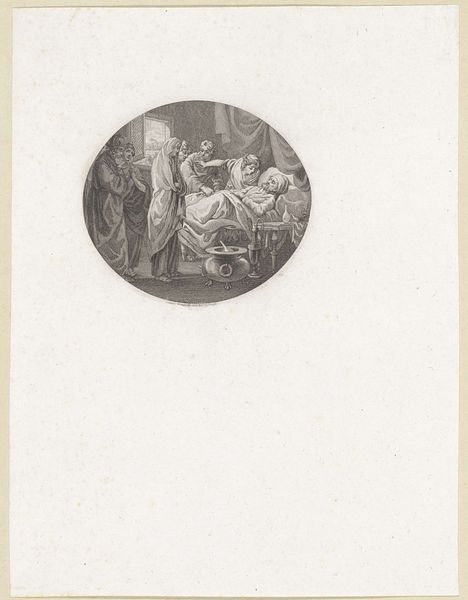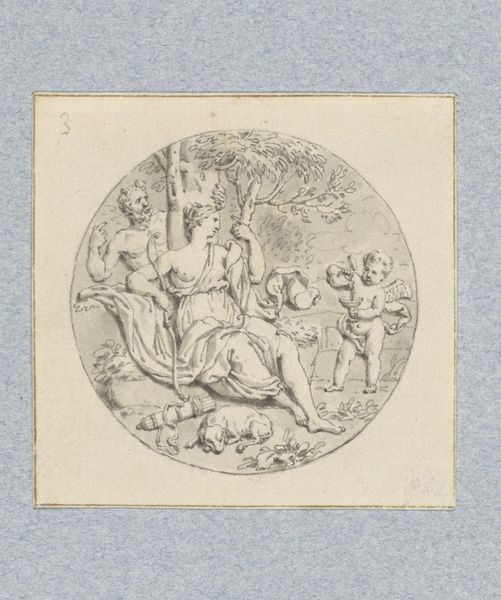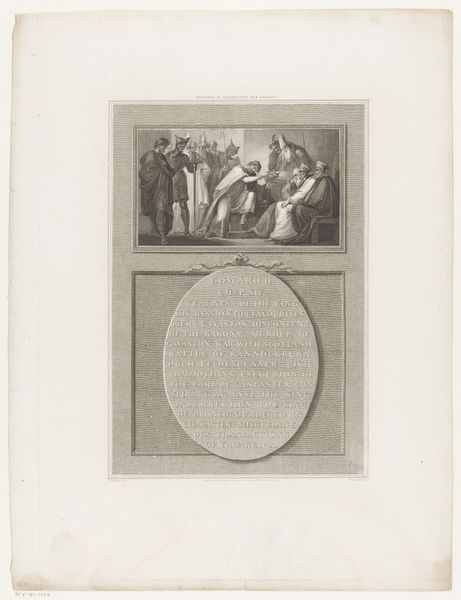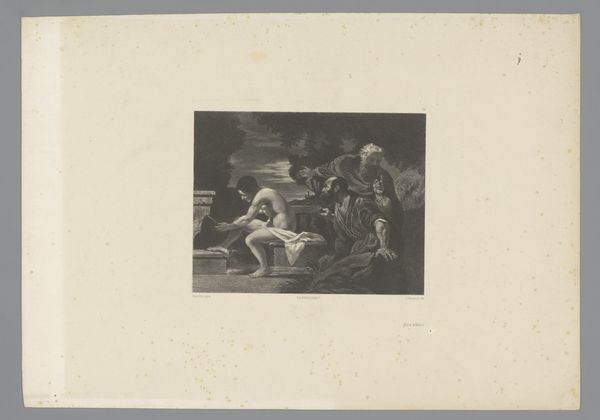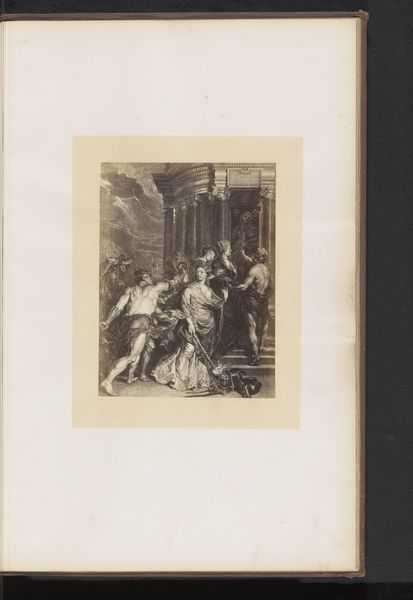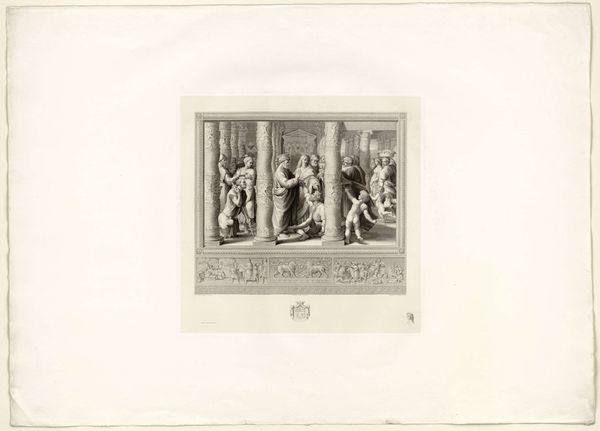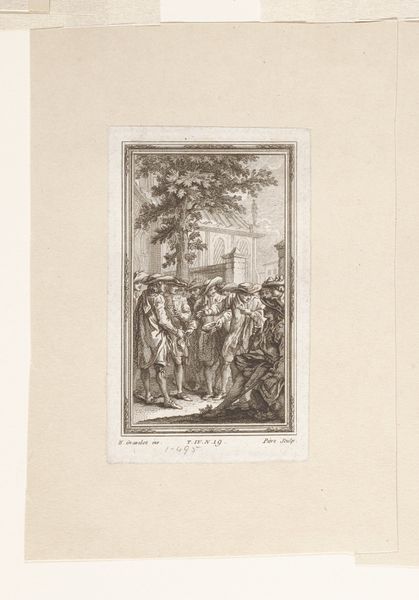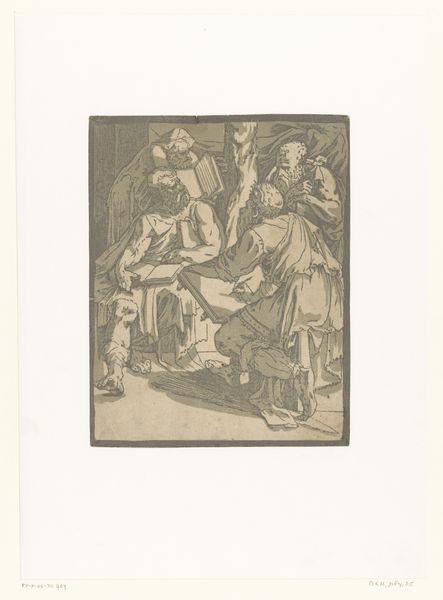
print, paper, engraving
#
neoclacissism
# print
#
paper
#
history-painting
#
engraving
Dimensions: height 138 mm, width 146 mm
Copyright: Rijks Museum: Open Domain
Editor: We’re looking at "Opstanding van Semida," an engraving from 1804 now held at the Rijksmuseum. The scene feels very staged, almost like a classical tableau. What do you see in this piece, especially in light of its historical context? Curator: The Neoclassical style is crucial here. Look at the deliberate composition, the emphasis on linear forms, and the way the figures are posed. Neoclassicism, in its resurgence of classical aesthetics, served political functions. It often aligned with revolutionary or imperial ambitions by harking back to the "glory" of Greece or Rome. Considering this, how might "Opstanding van Semida" engage with contemporary political sentiments of the time? Editor: I hadn’t thought about it in terms of power. Does the artist's choice to depict this particular historical event connect with contemporary power structures or ideas circulating at the time? Curator: Precisely! Think about the context: Europe was in turmoil, with Napoleon reshaping the continent. Neoclassical art provided a visual language of order and authority. Also consider where such prints were circulated – who saw them? How might that impact interpretations of the work? Editor: So, this print wouldn't have just been seen as an image, but as a kind of political statement distributed to a particular audience, maybe legitimizing certain political actions by giving them a historical or moral spin? Curator: Exactly. The circulation and reception of imagery are as crucial as its creation. How museums and collectors interpreted and displayed such works also tells us much about societal values at the time. It provides another layer to examine political messaging and control over interpretations through curatorial decisions. Editor: That adds so much depth. It is fascinating how something that seems like just a historical depiction could actually be doing so much more. I'll definitely look at art differently now! Curator: Indeed. Understanding art involves understanding its complex social, cultural and political functions. It's all interconnected!
Comments
No comments
Be the first to comment and join the conversation on the ultimate creative platform.
